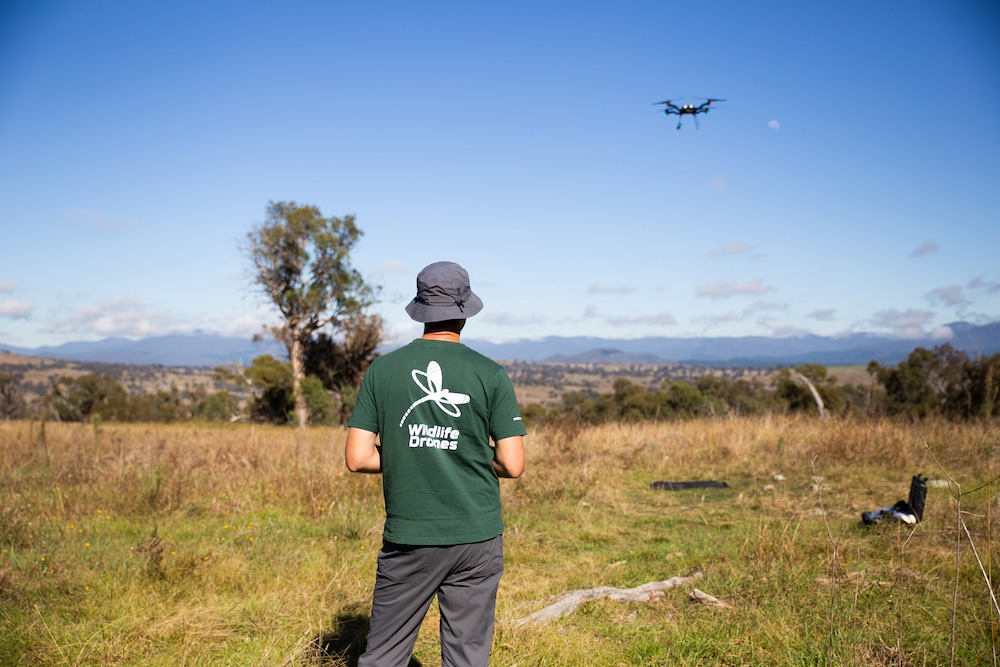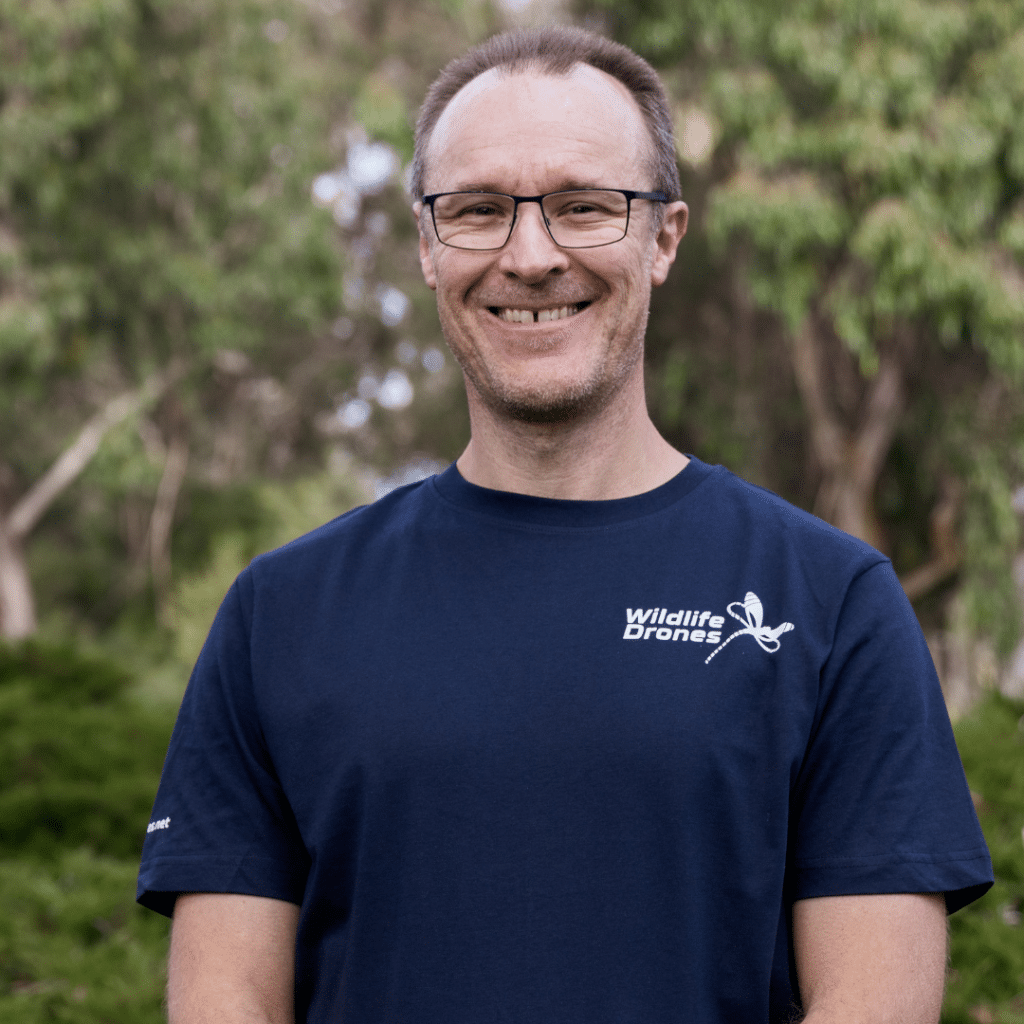
Insights
Drone Pilot Stories with Phil Keaton
Meet Phil who is one of the skilled drone pilots at Wildlife Drones. He plays a crucial role in product development by flying and testing improvements to our cutting-edge hardware and software and provides valuable feedback to guide the development team. Every week he’ll head out to our testing site and use his flying expertise to enhance our technology and bring value to our customers.
What made you decide to get your drone pilot licence?
Part of my role at Wildlife Drones is to support customers to use the system on their drone so it made a lot of sense for me to become a drone pilot. This has allowed me to spend many hours in the field developing a deep understanding of how the system works so that I can provide the best possible support.
Also, as Product Manager, being able to pilot the drone with our system means I have a much better understanding of the product from the perspective of our users. This significantly helps to facilitate more rapid product development which again benefits our customers.
What specific qualifications do you need to be a drone pilot? And what was the training experience like?
In Australia, to fly drones above 2kg for commercial purposes requires the pilot to hold a RePL (Remote Pilot Licence) and operate under an organisation that has a ReOC (Remote Operators Certificate). The training was really interesting. The course covers a whole range of topics apart from actual drone flying and regulations including meteorology, navigation, human factors, and how to communicate using an airband radio.
What drone do you fly mostly? What do you like/dislike?
I fly the Freefly Astro most of the time. It’s a durable, well-made aircraft that’s really easy to fly, and very quiet! They’ve used a lot of metal alloys in the construction which should allow it to last for many, many years – it’s a real workhorse. A lot of other drones incorporate many plastic parts which tend to crack and fail after just a few years.
Can you walk me through your pre-flight preparation process?
There are many steps involved in preparing to fly a drone safely. It all starts with an assessment of the area where I’ll be flying. To start with, I conduct a risk assessment of potential hazards, plan flight paths, and identify safety measures required for the location and the flying situation. The forecasted weather needs to be checked both beforehand and on the day of flying to make sure the operational limits of the drone won’t be exceeded and that it is safe to fly. I also obtain approvals to fly at the location, and address any special requirements if it will be near areas like aerodromes, airports and other controlled or restricted airspaces. All planning needs to be approved by my Chief Remote Pilot before flights can take place. Then, before heading out, I’ll check and prepare the aircraft and payload. Once at the flight location, I perform preflight safety checks and continually assess and deal with new hazards that may emerge once I am in the air.
What kind of projects do you work on? And can you describe a particularly memorable flight experience?
At Wildlife Drones I work on product development and test our technology on a regular basis but I also get out and do radio tracking for customers from time to time. The most memorable flight experience I’ve had was in early 2023 when we went out searching for a lost Koala in the southern highlands of NSW. The setting was a beautiful tall eucalypt forest in perfectly still conditions with stunning early morning light. Perfect flying conditions in a perfect setting! Flying in tall forest can be tricky, but fortunately, I was able to find a nice gap in the canopy that allowed me to fly a long way and perform a bearing rotation that nailed the final position of the animal.
What advice would you give to someone who is interested in becoming a drone pilot?
In Australia, If you’re starting up operations in your own company or organisation, remember that someone is required to perform the role of Chief Remote Pilot in order to approve flight operations. If that will be you, additional study and testing will be required to obtain a ReOC.
Want to learn more about becoming a Drone Pilot in Australia?
Speak to us about obtaining your Remote Pilots Licence. Through our partnership with Aviassist, an award-winning drone company, you’ll receive high-quality instruction and gain all the necessary skills required to become a qualified drone pilot.

What advice would you give to someone who is interested in becoming a drone pilot?
In Australia, If you’re starting up operations in your own company or organisation, remember that someone is required to perform the role of Chief Remote Pilot in order to approve flight operations. If that will be you, additional study and testing will be required to obtain a ReOC.
Want to learn more about becoming a Drone Pilot in Australia?
The training program we provide covers various aspects of drone flying, from the basics to the advanced deployment of our technology. Partnering with Aviassist, an award-winning drone company, we ensure that participants receive high-quality instruction and gain the necessary skills to become qualified pilots. The training courses not only focus on flying techniques but also highlight the benefits of Wildlife Drones’ innovative technology, giving pilots a competitive edge in the industry.
Follow this link.

